In Polish tradition, Easter is one of the most important celebrations. Poles have been cultivating this holiday for centuries. Easter has brought many traditions and rituals that are still present in Polish homes. Plan your travel to Poland around Easter, and you will have an unforgettable experience.
Easter is the time of resurrection, not only in a religious way, but also the time of the year when the Spring starts, and everything comes back to life after the long winter months. Therefore, Easter in Poland is so colorful and full of blossoms and warmth. So, let’s see what are the best Easter traditions in Poland!
Here is my video of my family’s Easter celebration in 2022. You can watch it if you want to see the customs by yourself!
Table of Contents
Getting Ready For Easter
The preparation for Easter starts long before the actual holiday.
The Beginning of The Lent
The time of preparation for Easter precedes the carnival period. It is the time of parties and masquerades; the last days of this period are called Ostatki.
What is interesting, during the last week of the Carnival falls Fat Thursday. To learn more about Fat Thursday read this article on Polish Foodies. The beginning of Easter preparation starts with Ash Wednesday.
On this day, Poles go to church and, according to tradition, the priest sprinkles ashes on the heads of parishioners, which symbolizes the passing of life. Ash Wednesday is the beginning of Lent that lasts for 40 days.
Polish Palm Sunday – the tradition of blessing the palm and the Holy Week
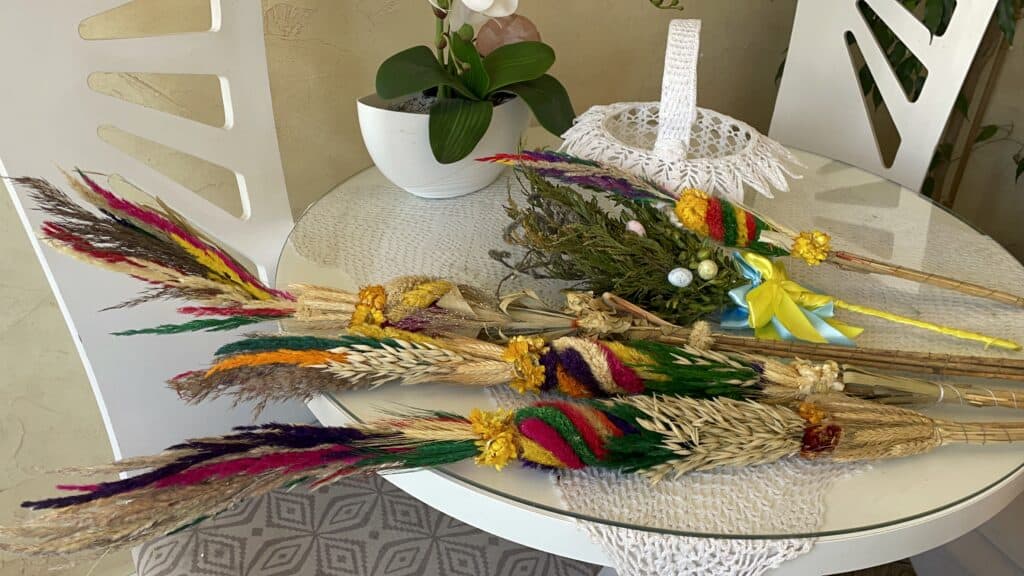
The most important Polish Easter tradition starts on Palm Sunday (the last Sunday before Easter Day). It commemorates the arrival of Jesus in Jerusalem.
In Poland, the tradition of blessing Easter palms dates to the 11th century and is still very much alive in all regions, cities, and the countryside.
What makes the Polish palm blessing so unique?
What distinguishes the Polish tradition of blessing palms from other countries is that Polish Easter Palms are colorful, beautiful, and made with great precision and heart. In many regions competition exist for the most beautiful or the tallest Easter Palm.
The most popular blessing palms are the ones that originate from Wilno (Now Lithuania). They are made of dyed dried flowers, and colored ears of cereals and are now well-known and accessible throughout the country. If you travel to Poland around this time of the year, visit a church on Palm Sunday so you can enjoy this beautiful tradition unravel before your eyes.
Pisanki Easter Eggs Decorating
Holy Week is a time of close preparation for Easter. The most beautiful Easter tradition is decorating eggs. Painted eggs are called pisanki.
The oldest records of this custom in Poland date back to the 10th century, and from the beginning, this has been an indispensable part of Easter. Nowadays, you can easily buy dyes for eggs, but in the past, housewives would use natural ingredients for this:
- beets if you want pink pisanki
- onion peels if you want brown pisanki
- carrot or pumpkin peels/juice if you want orange pisanki
- red cabbage leaves if you want blue pisanki
- spinach if you want green pisanki
- walnut shell if you want golden pisanki
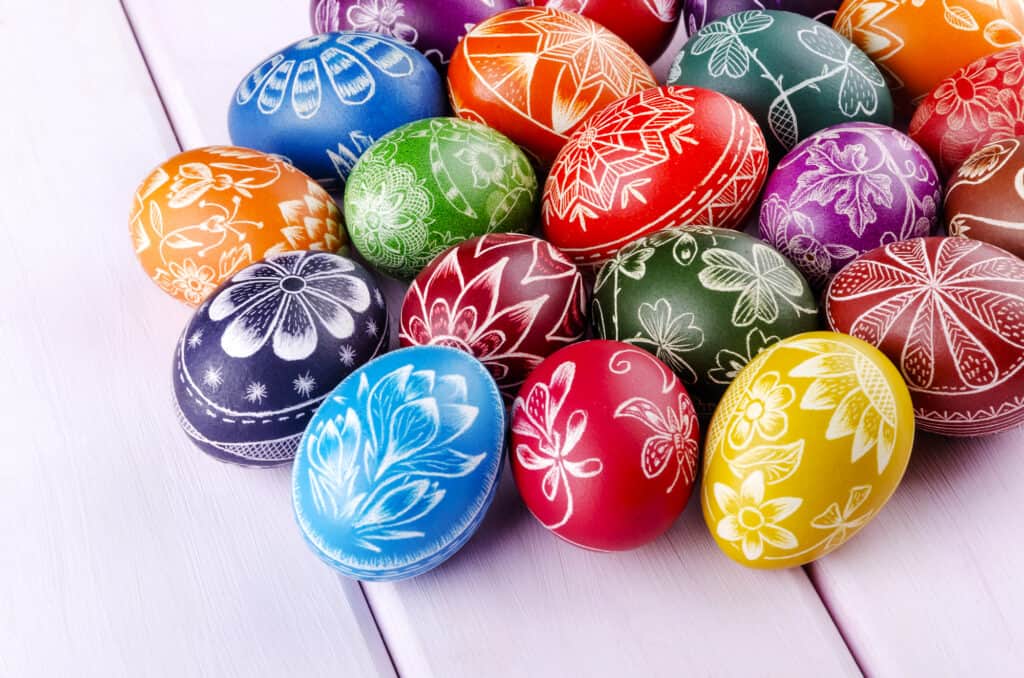
Different regions of Poland have distinct types of pisanki Easter eggs. These are:
- kraszanki – eggs colored with natural dyes,
- Nalepianki -eggs decorated with various materials glued to them
- Wydrapanki – this technique consists in scratching out patterns on an already-painted egg
- Pisanki – eggs decorated with melted wax patterns, and then such eggs are dipped in dye, after which the wax is scraped off and a beautiful pattern is left on the egg.
Similarly, like w Blessing Palms, there are many competitions for the most beautiful “kraszanka”, or “pisanka” going across Poland.
Polish Easter Basket -Święconka
On Holy Saturday, Poles bring a basket with Easter food to the church for the priest to bless it. This tradition dates to the 7th century in Poland and is very much cultivated to this day. Święconka symbolizes the resurrection of Jesus Christ and the new life in spring.
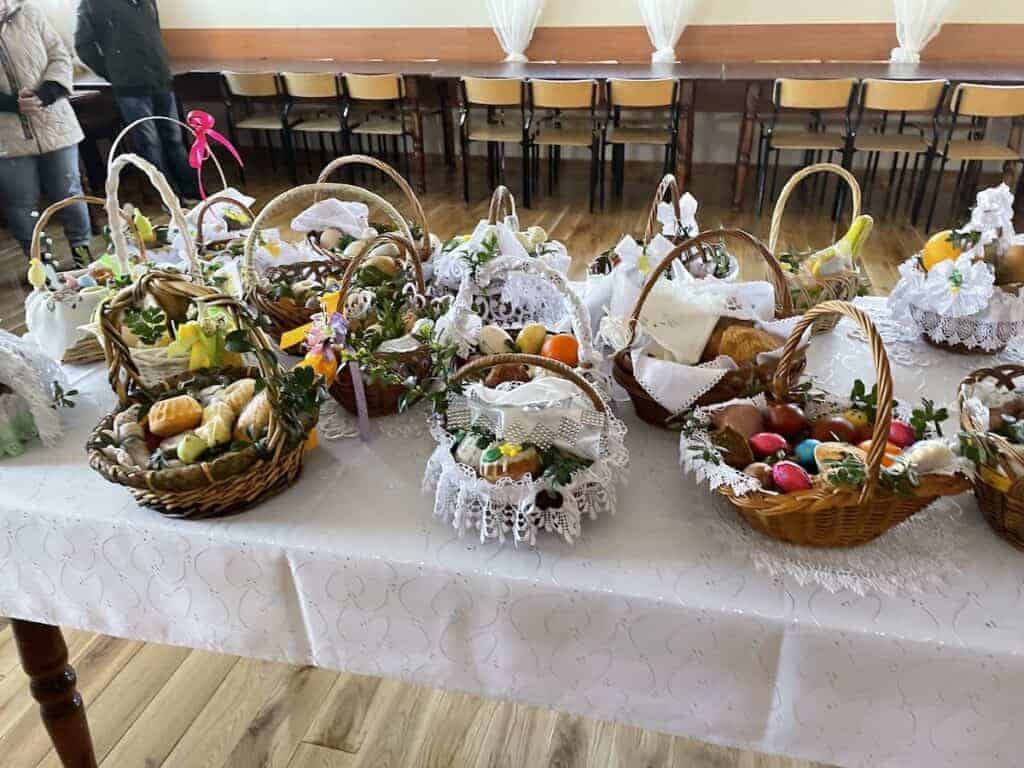
What food goes into the traditional Polish Easter Basket?
A small figurine of lamb made of sugar or butter, bread, salt, pepper, eggs, and horseradish.
After it is blessed, the Polish Easter basket waits for Easter Sunday to be served during festive breakfast.
Polish Easter Breakfast
Poles start celebrating Easter with the official breakfast. After the morning mass, the family and guests gather at the table to celebrate the festive meal.
During Polish Easter Breakfast, everyone has a piece of the food from it. The food served during breakfast has nothing in common with a regular breakfast. Specially prepared dishes are served specifically for this time. Across the country, you will find some of the most popular and in fact very delicious courses.
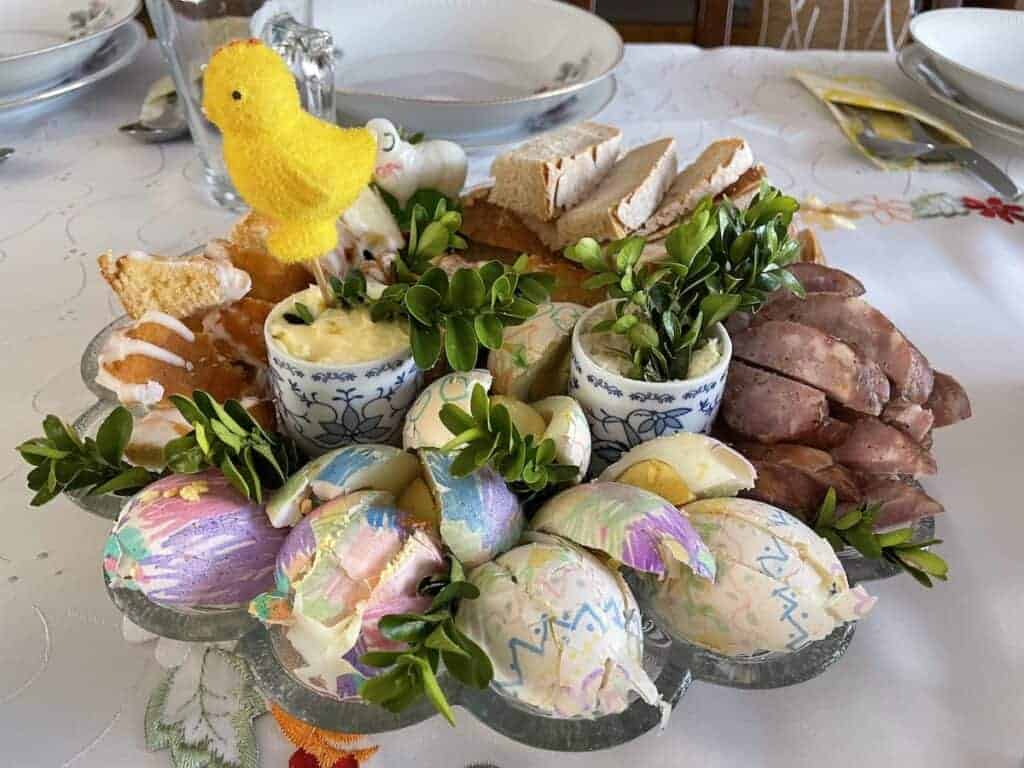
The Polish traditional dishes that you can find in all regions are:
- żurek, or biały barszcz (Sour Rye Soup, or Easter White Borscht)
- White Sausage
- eggs,
- Beets with horseradish
- Roasted meat
Poles also have traditional Easter cakes. Babka Wielkanocna (pound cake) and Mazurek are the most popular of them.
Polish Easter Monday – Lany Poniedziałek
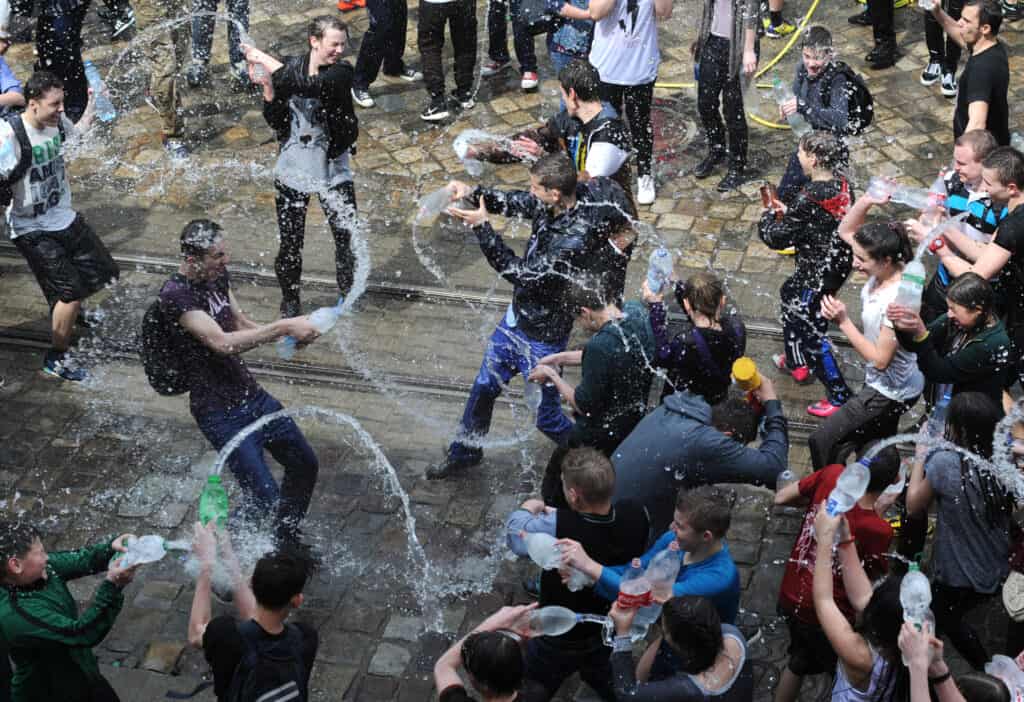
Lany Poniedziałek in Poland is another very old tradition. Poles celebrate the farewell to winter and the arrival of the season when everything comes to life. Polish Easter Monday is also known as Smigus Dyngus day. The two most popular customs associated with Easter Monday are:
Śmigus
According to tradition, on this day people symbolically beat their legs with willow twigs or palms. However, this is not common nowadays.
Dyngus
This tradition has to do with splashing each other with water. This not only symbolized purification but was also supposed to promote fertility. Boys would splash water over girls and there was a belief that those that were the wettest were the most popular with boys. Today the belief is not that strong anymore, but splashing with water is still very much alive, and people splash each other for fun.
Some forgotten customs and traditions.
There are many old customs and traditions, that are now forgotten because of the way our life has changed over the years. The ones I mentioned in this article are still in practice and you can be sure to experience them when you visit Poland during Easter time.
7 Responses
Your decorated palms and Easter eggs are beautiful. Thank you for the horseradish recipe. My family had a recipe but unfortunately it was never written down and anyone that would have made it is gone. My husband loves the hot horseradish but he can never find one that is hot enough. I am going to have him try making your receipe and see if this is what he is looking for.
I love all of your traditions that you write about. One of these days I would love to visit Poland.
Thanks, Linda! I hope you will have a chance to visit Poland one day 🙂
Thank you for the wonderful informative video .
Thank for the reminder to bring family traditions to the next generation . I’ve remember doing this as a small child but my parents didn’t do some things I’m going to share them all thank u . God Bless Happy Easter ” Christ has Risen ” “Yo stouses gress” spelled wrong lo
A wonderful description. We are looking forward to our trip during these holidays, and experiencing a Polish Easter. Now I know to look for various styles of eggs as we will be in Gdansk, then Wroclaw, and Krakow.
I went to a Polish Catholic elementary school. I remember with nostalgia going to midnight mass on the eve of Easter and watching the Polish soldiers changing of the guard. And of course the body of Christ was missing on Easter morning. We also had a procession of all the students from the school to the church in w which we all carried an Easter lily which was placed on the altar. Our family also had our Easter baskets blessed in the church and we ate the contents for Easter breakfast. Your video brought tears to my eyes as I remember all the aunts and uncles and cousins gathering together for Easter breakfast. Thanks for the memories.
I am so happy to read that! Thanks for your comment, Patricia :).